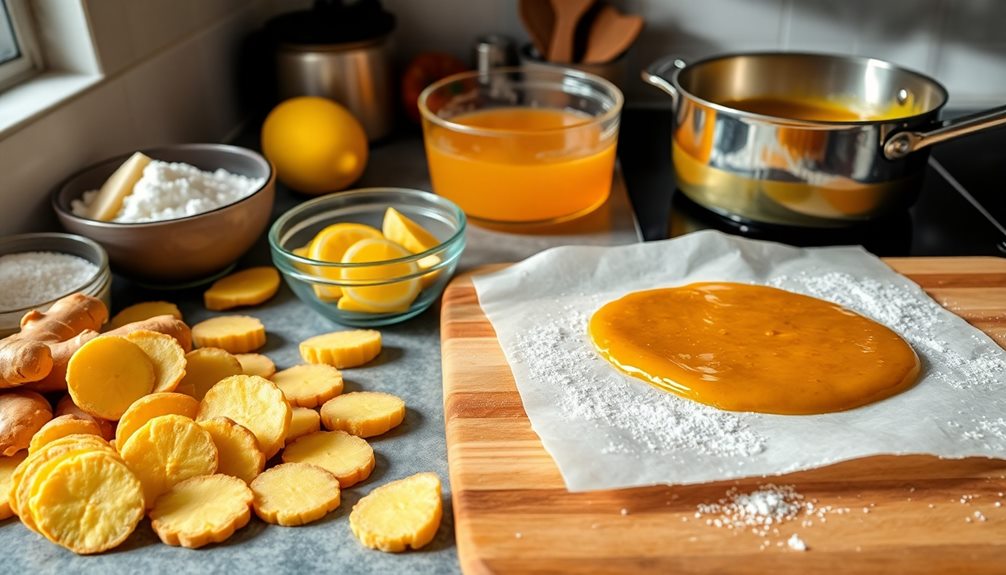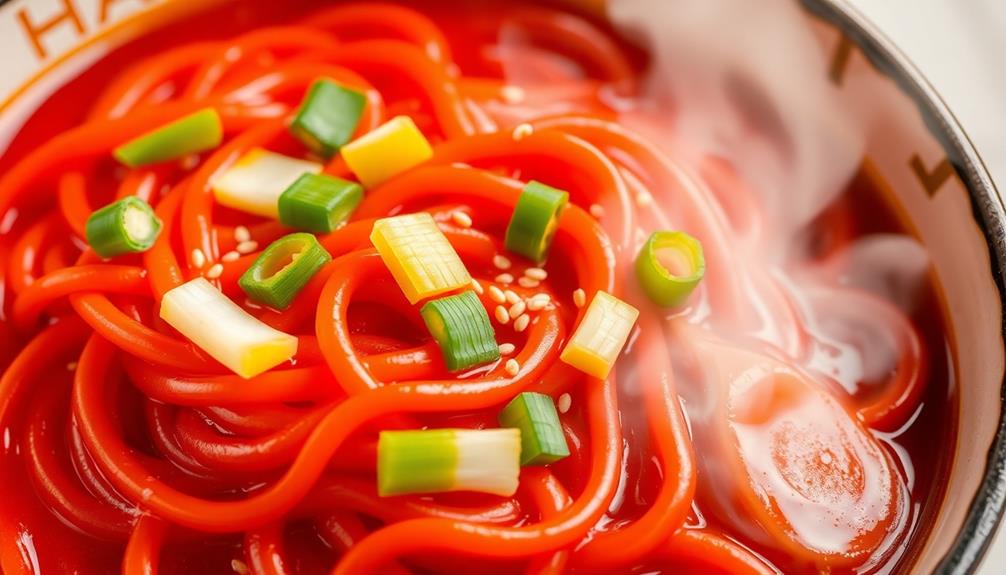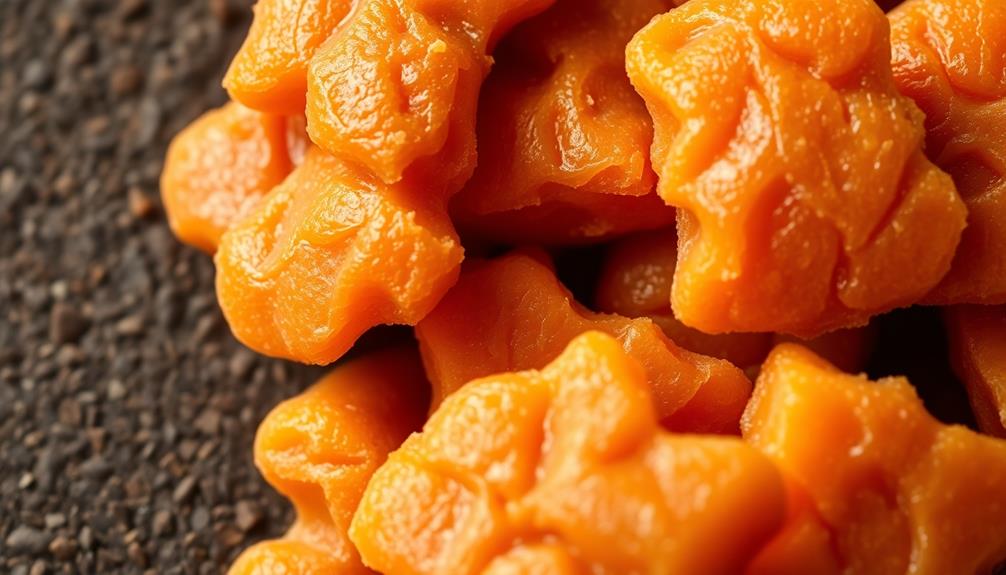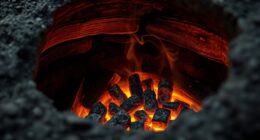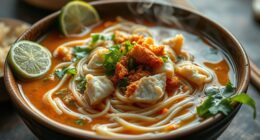When you bake, precise measurements are essential because even tiny differences in ingredient ratios can change the texture, flavor, and structure of your goods. Too much flour or not enough leavening can make your bread dense or your cake flat. Understanding the science behind how ingredients interact guarantees better control, consistency, and perfect results every time. Keep exploring, and you’ll see how mastering these details transforms your baking into a true craft.
Key Takeaways
- Precise ingredient ratios ensure optimal chemical reactions for proper rising, texture, and flavor development.
- Accurate measurements lead to consistent results and prevent issues like dense or flat baked goods.
- Proper proportions facilitate essential reactions like caramelization and Maillard browning, enhancing taste and appearance.
- Using exact measurements allows for better control over batter and dough consistency, improving overall quality.
- Understanding ingredient chemistry transforms baking into a predictable science, enabling successful experimentation and troubleshooting.

Have you ever wondered what makes a perfect loaf of bread or a light, airy cake? The secret lies in understanding the science behind baking, particularly how ingredient ratios and chemical reactions work together to create the textures and flavors you love. When you bake, every measurement counts because the balance of ingredients directly influences the outcome. Too much flour, and your bread might turn dense; too little sugar, and your cake could fall flat. The precise ingredient ratios ensure that the right proportions of flour, liquids, fats, and leavening agents are in place to produce the desired structure and taste.
But it’s not just about measuring accurately; it’s also about understanding the chemical reactions triggered by these ingredients. Baking is a chemistry experiment happening in your oven. For example, when you combine baking soda or baking powder with moisture and heat, they produce carbon dioxide gas through a chemical reaction. This gas gets trapped within the gluten network or batter, causing it to rise and give baked goods their fluffy texture. Without the correct amount of leavening agents, or if the reactions don’t occur properly due to incorrect ingredient ratios, your baked goods won’t rise as they should, resulting in dense or flat textures.
Moreover, the interactions between ingredients influence flavor development and crust formation. When sugars caramelize during baking, they undergo chemical changes that add color and depth of flavor. Proteins in eggs and milk also undergo Maillard reactions when heated, creating the rich browning and complex aromas you associate with well-baked bread and pastries. If ingredient ratios are off, these reactions might not happen *at their best*, affecting both appearance and taste. Understanding chemical reactions can help bakers troubleshoot and optimize their recipes for consistent results.
The key is precision: measuring your ingredients accurately ensures consistent chemical reactions. Using a kitchen scale instead of volume measurements can make all the difference, especially for delicate baked goods. When you understand how ingredient ratios affect the chemistry, you gain control over the process, allowing you to troubleshoot problems or experiment confidently. Baking becomes less about guesswork and more about applying scientific principles.
In the end, mastering the science of baking means respecting the importance of exact measurements and appreciating the chemical reactions that occur in your oven. It’s this knowledge that transforms baking from a simple task into a precise craft, helping you create delicious, consistent results every time. So, next time you bake, remember that every ingredient and every step is part of a fascinating chemical dance—one that, when understood, *unlocks* the full potential of your baking skills.
Frequently Asked Questions
How Does Altitude Affect Baking Measurements?
When baking at high altitudes, you need to make altitude adjustments because the lower air pressure affects measurements. You might reduce baking powder, increase liquid, or adjust oven temperature to prevent over-expanding or collapsing. Proper baking calibration helps you determine the right changes, ensuring your baked goods turn out perfectly. Always remember, precise measurements and altitude adjustments are key to consistent, successful results at higher elevations.
Can I Substitute Ingredients Without Altering Measurements?
You can substitute ingredients, but measurement accuracy remains essential. Think of baking like a delicate symphony—each ingredient plays a critical role. When you swap ingredients, you risk disrupting the harmony, so measure precisely and understand how substitutions impact the recipe. For best results, research proper replacements and adjust measurements accordingly. This way, your baked goods stay consistent, delicious, and perfectly balanced, even with ingredient changes.
Why Do Different Flours Require Different Measurements?
Different flours need different measurements because their flour protein and moisture content vary. Higher protein flour, like bread flour, absorbs more water and creates a stronger gluten structure, so you’ll use less flour overall. Lower protein flour, like cake flour, has more moisture and absorbs less water, requiring a different measurement. Adjusting for these differences makes certain your baked goods turn out with the right texture and structure.
How Do Temperature Fluctuations Impact Precise Baking?
Did you know that a 25°F difference in oven temperature can change baking times by up to 20%? Temperature fluctuations can seriously affect your results, making oven calibration essential for ingredient consistency. When your oven isn’t accurate, your baked goods may turn out undercooked or burnt. Keeping your oven at a steady, calibrated temperature guarantees your ingredients react as intended, giving you perfect, consistent baked treats every time.
Are Digital Scales More Accurate Than Measuring Cups?
Digital scales are generally more accurate than measuring cups because they provide precise measurement accuracy, allowing you to weigh ingredients down to grams or ounces. With digital scales, you avoid the inconsistencies of volume measurements caused by ingredient packing or settling. This accuracy helps ensure your baked goods turn out just right every time, especially when recipes require exact measurements for consistent results.
Conclusion
Remember, in baking, precision is key—it’s where science meets art. When you measure carefully, your baked goods turn out just right, with the perfect texture and flavor. Don’t forget the saying, “A little of everything, and everything in its place.” Embrace the process, trust the science, and enjoy creating delicious treats. Baking well isn’t just about the end result; it’s about enjoying every step along the way.


